
Puzzle video games make up a broad genre of video games that emphasize puzzle solving. The types of puzzles can test problem-solving skills, including logic, pattern recognition, sequence solving, spatial recognition, and word completion. Many puzzle games involve a real-time element and require quick thinking, such as Tetris (1985) and Lemmings (1991).
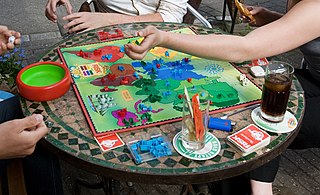
Risk is a strategy board game of diplomacy, conflict and conquest for two to six players. The standard version is played on a board depicting a political map of the world, divided into 42 territories, which are grouped into six continents. Turns rotate among players who control armies of playing pieces with which they attempt to capture territories from other players, with results determined by dice rolls. Players may form and dissolve alliances during the course of the game. The goal of the game is to occupy every territory on the board and, in doing so, eliminate the other players. The game can be lengthy, requiring several hours to multiple days to finish. European versions are structured so that each player has a limited "secret mission" objective that shortens the game.

Mario Party 4 is a 2002 party video game developed by Hudson Soft and published by Nintendo for the GameCube. The game is the fourth installment in the Mario Party series and is the first game in the series to be released for the GameCube. Like the previous games in the series, it features eight playable characters: Mario, Luigi, Princess Peach, Yoshi, Wario, Donkey Kong, Princess Daisy, and Waluigi from the Mario franchise, who can be directed as characters on 6 themed game boards. The objective is to earn as many stars as possible, which are obtained by purchase from a single predefined space on the game board. Each character's movement is determined by a roll of a die, with a roll from each player forming a single turn. Each turn is followed by a minigame in which characters compete for coins they can use to purchase items and stars.

Rainbow Islands: The Story of Bubble Bobble 2 (レインボーアイランド) is a 1987 arcade game developed and published by Taito. The arcade version was licensed to Romstar for North American manufacturing and distribution. The game is subtitled "The Story of Bubble Bobble 2" and is the sequel to Taito's hit game Bubble Bobble from the previous year. It is the second of four arcade games in the Bubble Bobble series. The game was ported for numerous home computers and game consoles.

Dark Tower is a 1981 electronic board game, by Milton Bradley Company, for one to four players. The object of the game is to amass an army, collect the three keys to the Tower, and defeat the evil within. The game came out during the height of the role-playing game craze in the early 1980s. Advertising for the game included a television commercial featuring Orson Welles.

Cooperative board games are board games in which players work together to achieve a common goal rather than competing against each other. Either the players win the game by reaching a pre-determined objective, or all players lose the game, often by not reaching the objective before a certain event ends the game.
Betrayal at House on the Hill is a board game published by Avalon Hill in 2004, designed by Bruce Glassco and developed by Rob Daviau, Bill McQuillan, Mike Selinker, and Teeuwynn Woodruff. Players all begin as allies exploring a haunted house filled with dangers, traps, items, and omens. As players journey to new parts of the mansion, room tiles are chosen at random and placed on the game board; this means that the game is different each session. Eventually the "haunt" begins, with the nature and plot of this session's ghost story revealed; one player usually "betrays" the others and takes the side of the ghosts, monsters, or other enemies, while the remaining players collaborate to defeat them.
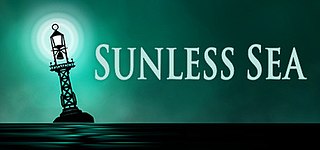
Sunless Sea is a survival/exploration role-playing video game with roguelike elements developed by Failbetter Games. The game was released on 6 February 2015 for Windows and OS X following a successful Kickstarter campaign to crowdfund the project. The game takes place in the universe of Failbetter's browser adventure game Fallen London, in which Victorian-era London has been moved beneath the earth's surface to the edge of the Unterzee, a vast underground ocean. On 11 October 2016, the game's first downloadable content Zubmariner was released, which allows players to explore beneath the surface of the "zee". A sequel, Sunless Skies, was announced in September 2016. It surpassed its funding goals on Kickstarter and was released on 31 January 2019.
Buccaneer was a board game published in Britain by Waddingtons between the 1930s and 1980s.
Pirates of the Caribbean is a Disney media franchise encompassing numerous theme park rides, a series of films, and spin-off novels, as well as a number of related video games and other media publications. The franchise originated with Walt Disney's theme park ride of the same name, which opened at Disneyland in 1967 and was one of the last Disneyland attractions overseen by Walt Disney. Disney based the ride on pirate legends, folklore and novels, such as those by Italian writer Emilio Salgari.

Twilight Struggle: The Cold War, 1945–1989 is a board game for two players, published by GMT Games in 2005. Players are the United States and Soviet Union contesting each other's influence on the world map by using cards that correspond to historical events. The first game designed by Ananda Gupta and Jason Matthews, they intended it to be a quick-playing alternative to more complex card-driven wargames.

Pandemic is a cooperative board game designed by Matt Leacock and first published by Z-Man Games in the United States in 2008. Pandemic is based on the premise that four diseases have broken out in the world, each threatening to wipe out a region. The game accommodates two to four players, each playing one of seven possible roles: dispatcher, medic, scientist, researcher, operations expert, contingency planner, or quarantine specialist. Through the combined effort of all the players, the goal is to discover all four cures before any of several game-losing conditions are reached.
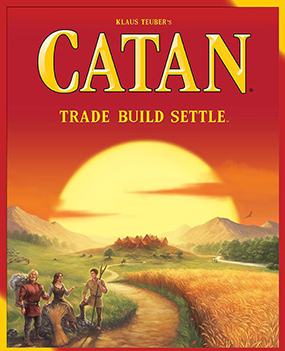
Catan, previously known as The Settlers of Catan or simply Settlers, is a multiplayer board game designed by Klaus Teuber. It was first published in 1995 in Germany by Franckh-Kosmos Verlag (Kosmos) as Die Siedler von Catan. Players take on the roles of settlers, each attempting to build and develop holdings while trading and acquiring resources. Players gain victory points as their settlements grow and the first to reach a set number of victory points, typically 10, wins. The game and its many expansions are also published by Catan Studio, Filosofia, GP, Inc., 999 Games, Κάισσα (Káissa), and Devir. Upon its release, The Settlers of Catan became one of the first Eurogames to achieve popularity outside Europe. As of 2020, more than 32 million copies in 40 languages had been sold.
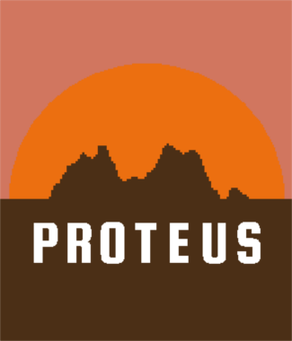
Proteus is a 2013 exploration and walking simulator video game designed and created by Ed Key and David Kanaga for Microsoft Windows, OS X, Linux, PlayStation 3, and PlayStation Vita. In the game, the player traverses a procedurally generated environment without prescribed goals. The world's flora and fauna emit unique musical signatures, combinations of which cause dynamic shifts in audio based on the player's surroundings.

The Legend of Legacy is a turn-based role-playing video game for the Nintendo 3DS handheld video game console, developed by Cattle Call. The game was first published for Japan by FuRyu in January 2015, then localized by Atlus USA to be published by Atlus USA for North America in October and by NIS America for Europe and Australia in February 2016. The story takes place on the legendary lost continent of Avalon, where eight adventurers explore and fight to uncover its mysteries.

Matt Leacock is an American board game designer, most known for cooperative games such as Pandemic, Pandemic Legacy: Season 1, Forbidden Island and Forbidden Desert.
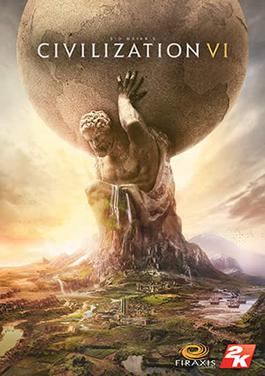
Sid Meier's Civilization VI is a turn-based strategy 4X video game developed by Firaxis Games, published by 2K, and distributed by Take-Two Interactive. The mobile port was published by Aspyr Media. The latest entry into the Civilization series, it was released on Windows and macOS in October 2016, with later ports for Linux in February 2017, iOS in December 2017, Nintendo Switch in November 2018, PlayStation 4 and Xbox One in November 2019, and Android in 2020.

A legacy game is a variant of tabletop board games in which the game itself is designed, through various mechanics, to change permanently over the course of a series of sessions.

Rob Daviau is an American game designer known for creating legacy board gaming.
Return to Dark Tower is a board game for one to four players, designed and published by Restoration Games. The game is a sequel to the 1981 board game Dark Tower, by Milton Bradley Company. Return to Dark Tower has players cooperate or compete as they rule over kingdoms surrounding the titular Tower, with their chosen "heroes" gathering resources, defeating monsters and enhancing their strength. As the game progresses, the Tower dispenses corruption across the land, which players must cleanse, while also looking to identify the foe inhabiting the Tower, so that they may defeat it, to win the game. Return to Dark Tower features a circular mat that is sectioned into quarters, to represent the kingdoms, with a Bluetooth-powered Tower at the center, which is connected to an app that runs the game.
















